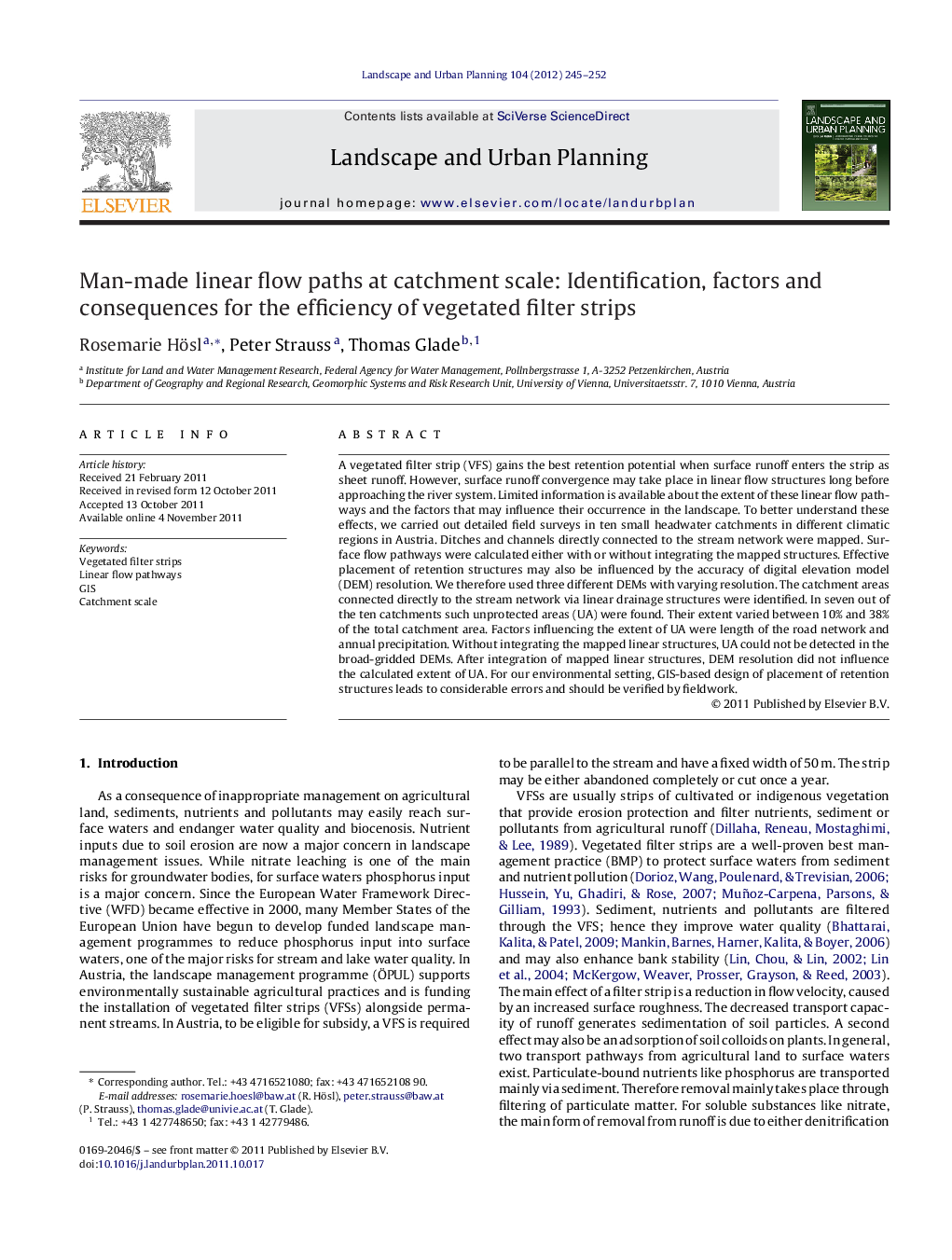| Article ID | Journal | Published Year | Pages | File Type |
|---|---|---|---|---|
| 1049546 | Landscape and Urban Planning | 2012 | 8 Pages |
A vegetated filter strip (VFS) gains the best retention potential when surface runoff enters the strip as sheet runoff. However, surface runoff convergence may take place in linear flow structures long before approaching the river system. Limited information is available about the extent of these linear flow pathways and the factors that may influence their occurrence in the landscape. To better understand these effects, we carried out detailed field surveys in ten small headwater catchments in different climatic regions in Austria. Ditches and channels directly connected to the stream network were mapped. Surface flow pathways were calculated either with or without integrating the mapped structures. Effective placement of retention structures may also be influenced by the accuracy of digital elevation model (DEM) resolution. We therefore used three different DEMs with varying resolution. The catchment areas connected directly to the stream network via linear drainage structures were identified. In seven out of the ten catchments such unprotected areas (UA) were found. Their extent varied between 10% and 38% of the total catchment area. Factors influencing the extent of UA were length of the road network and annual precipitation. Without integrating the mapped linear structures, UA could not be detected in the broad-gridded DEMs. After integration of mapped linear structures, DEM resolution did not influence the calculated extent of UA. For our environmental setting, GIS-based design of placement of retention structures leads to considerable errors and should be verified by fieldwork.
► The effectiveness of vegetated filter strips is limited by man-made flow structures. ► Such effects are hardly taken into account from landscape managers or policy makers. ► This study fills a lack between implementation of VFS and their effectiveness. ► It offers an error-estimation for landscape managers for comparing climatic regions.
